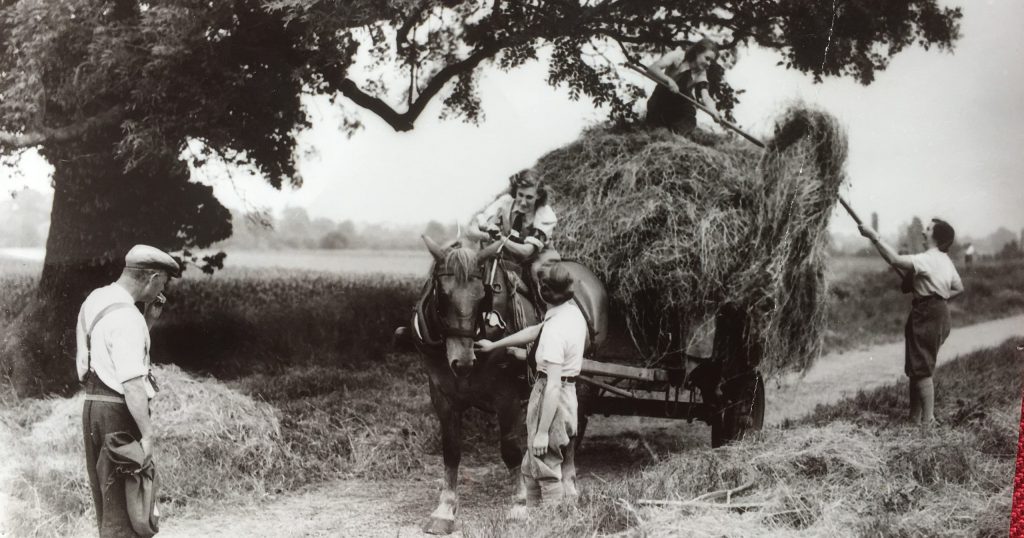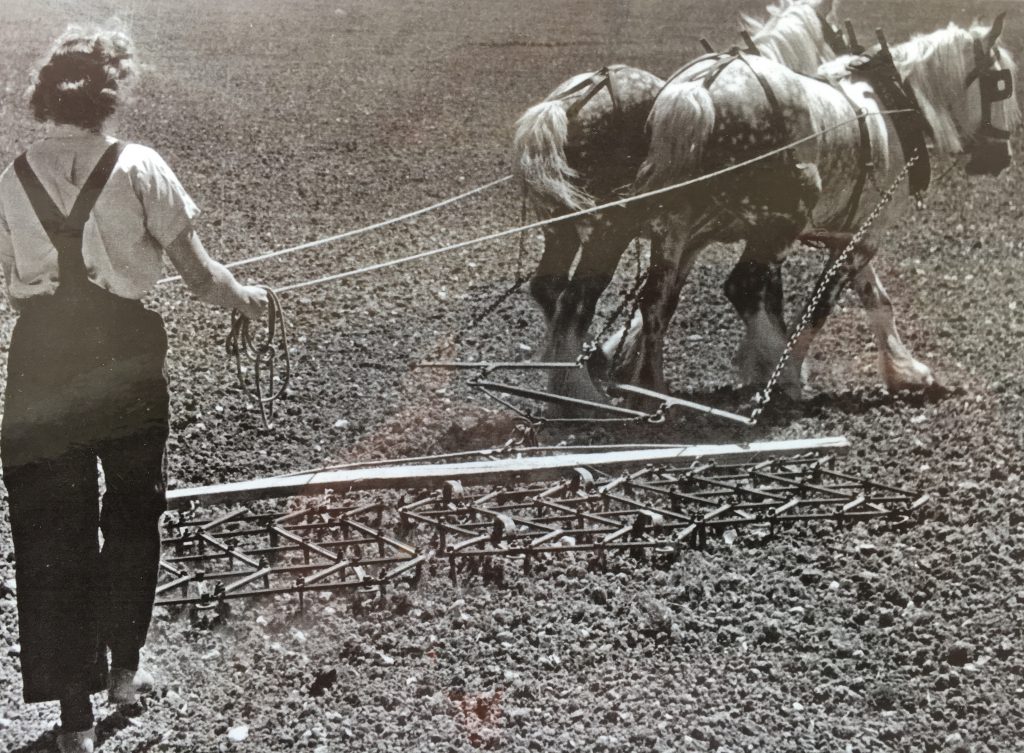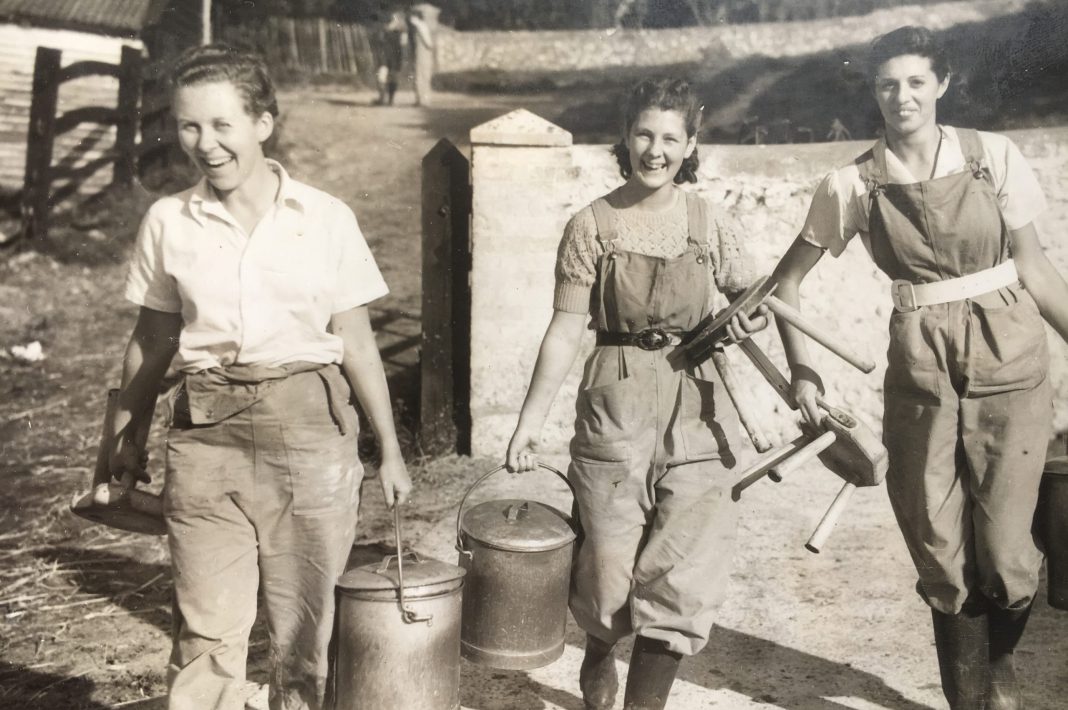On Monday, June 21 it was the last meeting of the Rye University of the third age (u3a) as they are having a summer break. The last talk was about the land girls in Britain. Ian Everest, while researching his father’s ancestry, realised that his mother was a land girl and started to look into the amazing work they did during second world war.
Women were initially asked to volunteer to serve in the Women’s Land Army (WLA) and from 1941 were conscripted to work on farms as the men were fighting on the front. By 1944 about 80,000 land girls were working for the WLA doing a variety of jobs on the land. The WLA was set up in 1917 but disbanded at the end of first world war, reforming in 1939.  The women performed all kinds of jobs which were done previously by the men. They worked in all weathers and conditions wherever they were sent to in the country. Many lived on the farms where they were helping until hostels were built and there were strict rules of what they had to wear.
The women performed all kinds of jobs which were done previously by the men. They worked in all weathers and conditions wherever they were sent to in the country. Many lived on the farms where they were helping until hostels were built and there were strict rules of what they had to wear.
Women were conscripted in 1941, working in industry, as nurses or joined the auxiliary territorial services or the air force. In 1943 they were also asked to work alongside prisoners of war as there were about 40,000 Italian prisoners employed on farms. In 1944 a quarter of the Women’s Land Army were doing some form of dairy work. Land girls were also employed as rat catchers, as pests posed a serious threat to food supply and animal fodder on British farms. They were trained in anti-vermin squads. Not surprisingly women got less pay than men who were doing the same work.
 In 1943 the Land Girls Charter was introduced including one week holiday and minimum wage for its time. Another branch which was set up in 1942 was the Women’s Timber Corps to help source and prepare wood needed for pit props. Known as the lumber girls, they were responsible for felling, sawing, lifting timber and burning brushwood.
In 1943 the Land Girls Charter was introduced including one week holiday and minimum wage for its time. Another branch which was set up in 1942 was the Women’s Timber Corps to help source and prepare wood needed for pit props. Known as the lumber girls, they were responsible for felling, sawing, lifting timber and burning brushwood.
Occasionally the ordinary public asked to volunteer on the farms for a short time as they saw it as a cheap holiday in the country. Nearly 200,000 land girls worked for the WLA from 1939 to 1950s replacing farm workers who had gone to war. Many friendships were formed amongst the women, some married farmers and many kept in touch. It was a special time for women to be counted and appreciated as strong and necessary help to keep the country going during the wars.
The Red Lion in the village of Snargate, Kent, not far from Rye, is worth a visit as it takes one back to the time when it was taken over in 1947 by a land girl, Doris Jemison. The pub dates back to the 1540s and has not changed much. Doris and her daughter have not updated it with all the modern trappings but offer nostalgia, table games, memories of the second world war on the walls and of course real ale from the barrel. It is utterly charming and the regulars appreciate its simplicity. For opening times please phone 01797 344 648
There will be further interesting talks when u3a starts again in September so it is worth a look at their website. Celebrating their 40th year, there will be celebrations throughout the year which will profile the wonderful and various groups as well as advertise the interesting monthly talks at the Monday meetings in the Rye Community Centre.
Image Credits: Ian Everest .



